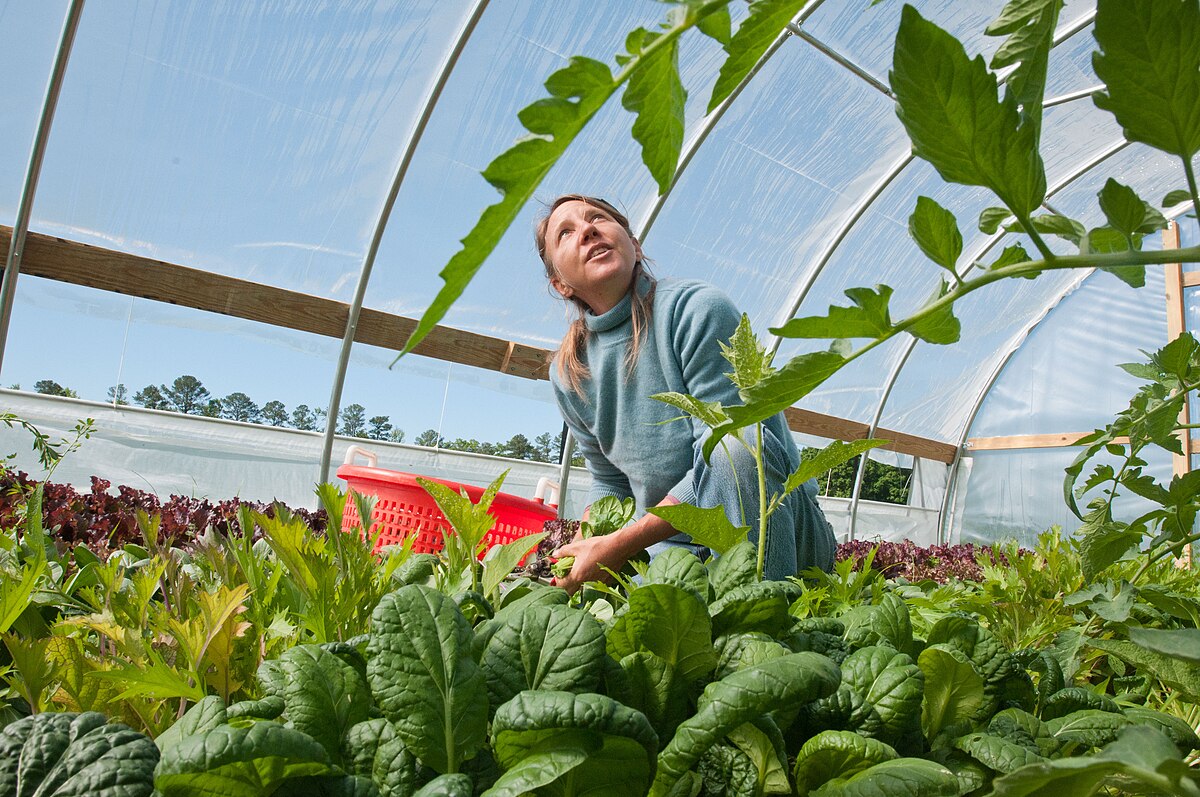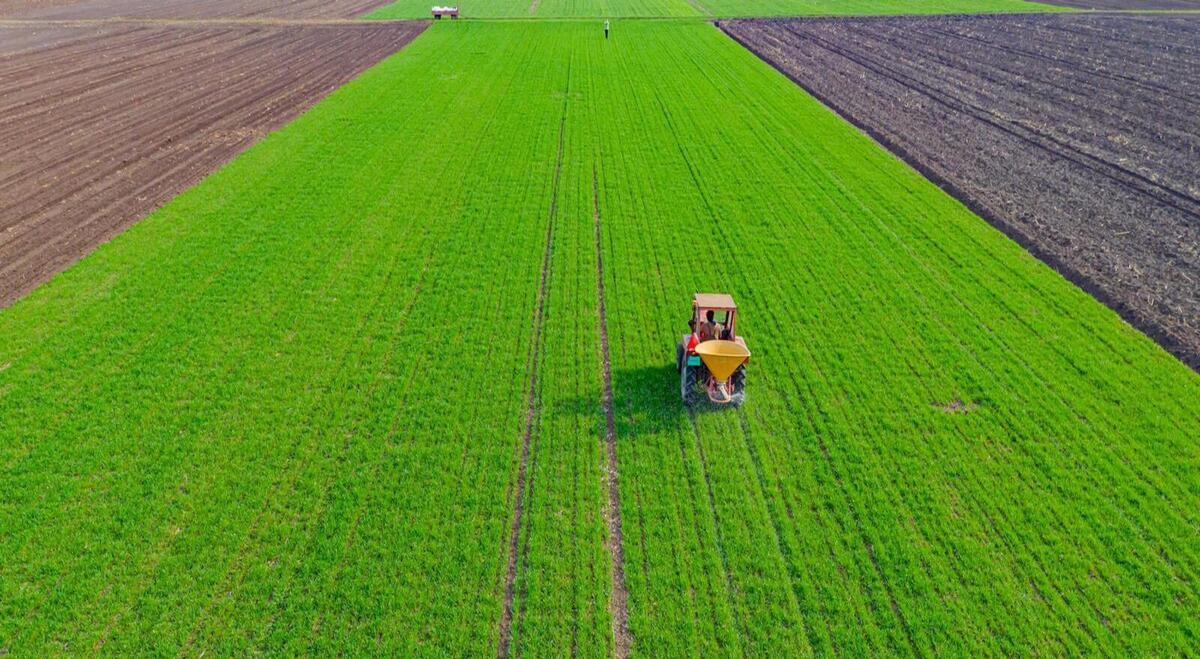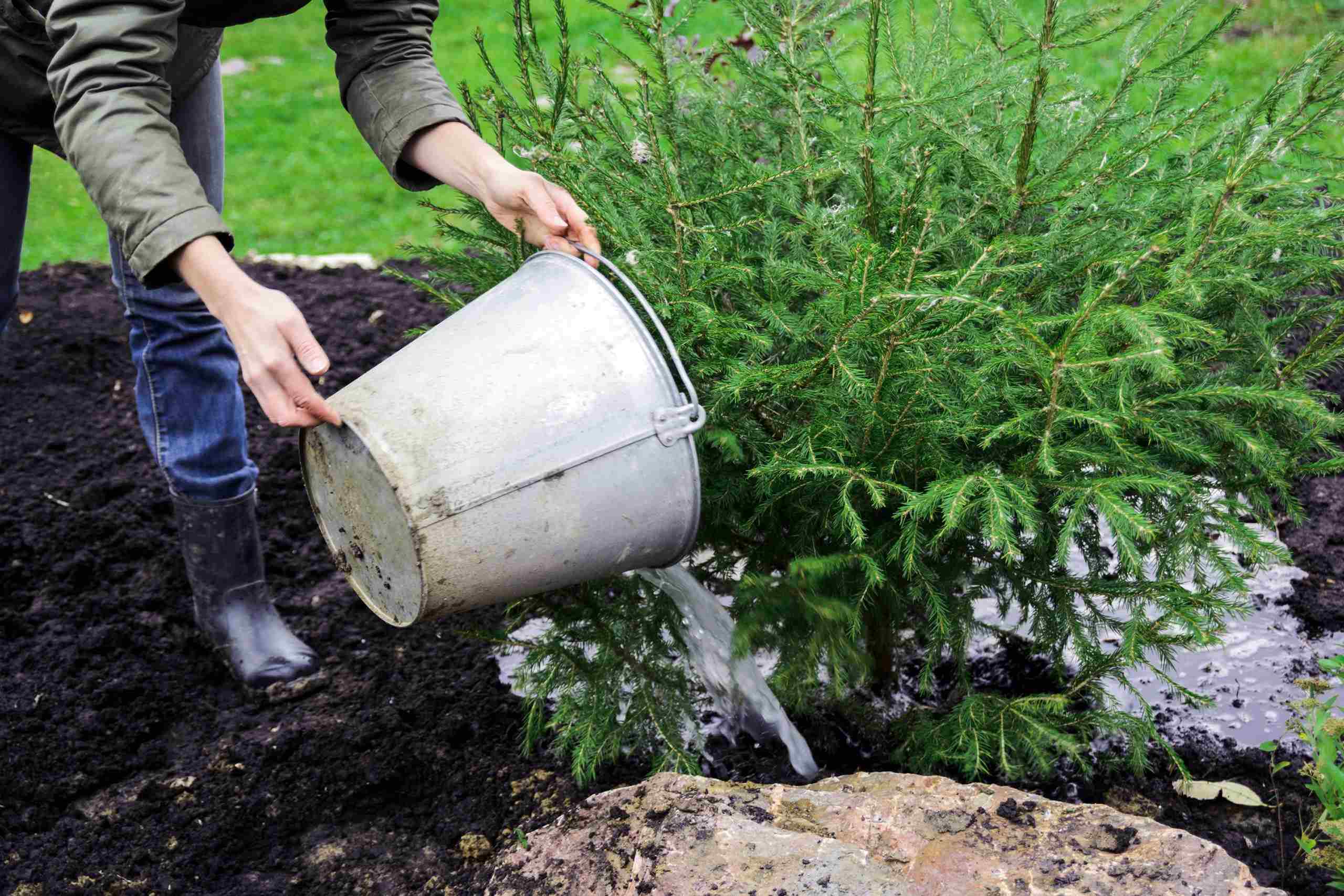Home>Gardening News and Trends>Latest News>In Which Situation Would Hydroponics Be Most Useful For Sustainable Farming


Latest News
In Which Situation Would Hydroponics Be Most Useful For Sustainable Farming
Modified: February 10, 2024
Looking for the latest news on sustainable farming? Discover how hydroponics can revolutionize the industry, increasing productivity and minimizing environmental impact.
(Many of the links in this article redirect to a specific reviewed product. Your purchase of these products through affiliate links helps to generate commission for Chicagolandgardening.com, at no extra cost. Learn more)
Table of Contents
Introduction
Welcome to the world of sustainable farming! In the quest to find innovative and environmentally friendly farming methods, hydroponics has emerged as a promising solution. It offers numerous advantages that address some of the most pressing challenges in agriculture today. But what exactly is hydroponics and how can it revolutionize farming practices?
Hydroponics is a soilless farming technique that involves growing plants in nutrient-rich water, instead of traditional soil-based methods. In this system, plants receive all the necessary nutrients directly through water, which is carefully balanced and monitored. By eliminating the need for soil, hydroponics offers a range of advantages that make it an ideal choice for sustainable farming.
From limited water availability in arid regions to land scarcity in urban areas, hydroponics provides a solution that can be applied in various situations. It allows for the cultivation of crops in a controlled environment and offers precise control over nutrient delivery. It also minimizes the risks associated with contaminated soil and enables year-round crop production.
In this article, we will explore the situations in which hydroponics can be most useful for sustainable farming. By understanding the benefits it offers, we can unlock its potential and contribute to a more sustainable and efficient agricultural future.
So, let’s dive into the world of hydroponics and discover how it can make a difference in various challenging farming scenarios. Whether you are a farmer, an urban dweller, or simply interested in sustainable food production, this article will provide you with valuable insights into the power of hydroponics.
Definition of Hydroponics
Hydroponics is a modern farming technique that involves growing plants without the use of soil. Instead of relying on traditional soil-based methods, hydroponics utilizes a carefully balanced nutrient-rich water solution to provide plants with all the essential minerals they need for healthy growth. This method allows for the cultivation of crops in a controlled environment, providing optimal growing conditions.
There are various hydroponic systems available, each with its own unique characteristics and advantages. Some of the most common systems include:
- Deep Water Culture (DWC): In this system, plant roots are suspended in a nutrient solution, with an air pump providing oxygen to the roots.
- Nutrient Film Technique (NFT): This system involves a thin film of nutrient solution flowing over the plant roots, providing constant access to nutrients.
- Drip Irrigation: In this method, nutrient solution is dripped onto the base of each plant, allowing it to slowly absorb into the root system.
- Aeroponics: A high-pressure mist of nutrient solution is sprayed onto the roots, providing ample oxygen and nutrients.
Hydroponics offers several advantages over traditional soil-based farming methods. Firstly, it allows plants to utilize nutrients more efficiently, resulting in faster growth and higher yields. Additionally, the controlled environment of hydroponic systems reduces the risk of pests and diseases, minimizing the need for pesticides and herbicides. This makes hydroponics a more environmentally friendly and sustainable option.
Furthermore, hydroponics eliminates the reliance on fertile soil, making it possible to grow crops in areas with poor soil quality or limited land availability. This opens up possibilities for urban farming, enabling individuals and communities to grow fresh produce even in densely populated areas.
By providing optimal conditions and precise control over nutrient delivery, hydroponics allows for year-round crop production. This eliminates the dependence on seasonal variations, ensuring a consistent supply of fresh produce regardless of the weather or climate.
In essence, hydroponics is a soilless farming technique that utilizes water-based nutrient solutions to support plant growth. Its versatility, efficiency, and sustainability make it an attractive option for farmers and individuals seeking to contribute to a more sustainable and resilient agricultural system.
Advantages of Hydroponics
Hydroponics offers a plethora of advantages that make it a valuable and sustainable farming method. Whether it’s addressing limited water availability, overcoming land scarcity in urban areas, or ensuring precise control over nutrient delivery, hydroponics provides innovative solutions to some of the biggest challenges in agriculture today. Let’s explore these advantages in more detail:
- Limited Water Availability: Water scarcity is a major concern in many regions around the world. Traditional farming methods require large amounts of water, making it challenging to sustain agricultural practices in arid areas. However, hydroponics uses up to 90% less water compared to conventional farming. The closed-loop water system in hydroponics allows for efficient water recycling and minimizes water wastage.
- Urban Farming: Rapid urbanization has led to a decrease in available agricultural land in cities. Hydroponics offers a solution for urban farming by utilizing vertical space, rooftops, and indoor environments to grow crops. With hydroponics, urban dwellers can transform unused buildings or small spaces into productive farms, providing fresh and local produce to urban communities.
- Harsh Environmental Conditions: Extreme climates and harsh environmental conditions such as desert regions or cold climates can make traditional farming challenging. Hydroponics provides a controlled environment where temperature, humidity, and light can be optimized for plant growth. This allows for the successful cultivation of crops in challenging environments and ensures a more reliable food supply.
- Land Scarcity: The availability of arable land is diminishing due to urbanization, soil degradation, and other factors. Hydroponics eliminates the need for fertile soil, making it possible to grow crops in areas with limited land availability. Vertical hydroponic systems maximize space utilization and can produce high yields in a smaller footprint compared to traditional farming.
- Contaminated Soil: Soil contamination from pollutants and chemicals is a widespread concern in many agricultural areas. Hydroponics eliminates the reliance on soil, providing a clean and controlled growing environment. This greatly reduces the risk of plants absorbing toxins and allows for safe and healthy food production.
- Year-round Crop Production: With hydroponics, farmers can have greater control over the growing conditions, including light, temperature, and nutrient delivery. This enables year-round crop production, regardless of seasonal variations. By extending the growing season, farmers can improve productivity, meet market demands, and reduce the need for long-distance transportation of produce.
- Precise Control over Nutrient Delivery: In hydroponics, plants receive a balanced nutrient solution directly through the water. This allows for precise control over nutrient levels and pH, ensuring optimal plant growth and minimizing nutrient wastage. By providing plants with the exact nutrients they need, hydroponics promotes healthier plants and higher yields.
These advantages make hydroponics a sustainable, efficient, and adaptable farming technique. It’s no wonder that more and more farmers and urban communities are turning to hydroponics as a way to overcome challenges and contribute to a more sustainable and resilient food system.
Limited Water Availability
Water scarcity is a critical issue in many parts of the world, with traditional agriculture methods consuming a significant amount of water. However, hydroponics offers a solution to this challenge by reducing water usage dramatically.
In hydroponics, plants are grown in a soilless medium and receive essential nutrients through a controlled water system. This system allows for efficient water usage through recirculation and reuse, minimizing water wastage. Compared to conventional farming, hydroponics can use up to 90% less water while still producing healthy and abundant crops.
The closed-loop water system in hydroponics ensures that water is continuously recycled. The excess water not absorbed by the plants is collected, filtered, and recirculated back into the system. This efficient water management minimizes the need for additional irrigation and reduces the strain on limited water resources.
Additionally, hydroponics allows for precise control over water delivery. Nutrient solutions can be tailored to the specific needs of different plants, ensuring they receive the right amount of water and nutrients at the right time. This eliminates the risk of over-watering, which can lead to water runoff and wastage.
Moreover, hydroponics can be combined with advanced technologies such as drip irrigation or automated controllers to further enhance water efficiency. These systems precisely deliver water and nutrients directly to the plant roots, minimizing evaporation and runoff.
The ability of hydroponics to thrive with limited water availability makes it an ideal solution for arid regions and areas facing water scarcity. It allows farmers to grow crops in sustainable and environmentally friendly ways, reducing the pressure on local water supplies.
By adopting hydroponics, farmers can optimize water usage, minimize waste, and promote responsible water management. This not only contributes to more sustainable farming practices but also ensures a reliable supply of fresh produce even in areas where water scarcity is a pressing concern.
Urban Farming
In rapidly expanding urban areas, agricultural land is becoming increasingly scarce. However, hydroponics offers a viable solution for urban farming, allowing individuals and communities to cultivate fresh produce in even the most densely populated areas.
One of the key advantages of hydroponics in urban farming is its ability to maximize space utilization. Vertical hydroponic systems, such as vertical farms or green walls, allow crops to be grown in multiple layers, effectively utilizing vertical space. This efficient use of space enables farmers to grow a larger quantity of crops in a smaller footprint compared to traditional farming methods.
Furthermore, hydroponics can be implemented in a variety of urban environments, including rooftops, balconies, and indoor spaces. These previously untapped areas become productive farming zones, providing access to fresh and locally grown produce in the heart of the city.
Urban hydroponic farms not only contribute to food production but also have additional benefits for urban communities. By growing food locally, transportation distances are minimized, reducing the carbon footprint associated with long-distance food supply chains. This promotes a more sustainable food system and supports the movement towards reducing food miles.
Additionally, urban hydroponic farms can become educational and community-centric spaces. They serve as platforms for knowledge sharing, where individuals can learn about sustainable farming practices, nutrition, and the importance of locally sourced food. Community engagement in urban farming initiatives fosters social connections, enhances food security, and improves overall well-being.
Moreover, hydroponic systems are well-suited for urban environments as they offer greater control over growing conditions. By implementing controlled indoor environments, factors such as temperature, humidity, and light can be optimized to create ideal growing conditions year-round. This not only increases productivity but also reduces the risk of pests and diseases commonly associated with outdoor farming.
Overall, hydroponics provides a unique opportunity for urban farming, allowing city dwellers to actively engage in food production within their local communities. By utilizing vertical space, optimizing resources, and promoting sustainability, hydroponics contributes to the growth of urban farming and the development of healthier, more resilient cities.
Harsh Environmental Conditions
Traditional farming methods often struggle to cope with extreme climates and harsh environmental conditions, such as desert regions or cold climates. However, hydroponics offers a solution by providing a controlled environment that can be optimized for plant growth, regardless of the external conditions.
In hydroponics, plants are grown indoors or in greenhouses, allowing for precise control over factors such as temperature, humidity, and light. This control enables farmers to create the ideal growing conditions for plants, even in regions with adverse weather conditions.
In desert regions, where water is scarce and temperatures are extreme, hydroponics offers a sustainable alternative to traditional agriculture. The closed-loop water system in hydroponics allows for efficient water usage, minimizing wastage in arid environments. Furthermore, the controlled environment of hydroponic systems helps to regulate temperatures and protect plants from the scorching desert heat.
On the other hand, in cold climates, hydroponics provides an opportunity for year-round crop production. By growing plants indoors, farmers can protect them from frost and extreme cold, ensuring a consistent supply of fresh produce. The use of artificial lighting and climate control systems in indoor hydroponic setups allows for optimal plant growth, unaffected by seasonal variations or adverse weather conditions outside.
Hydroponics is also effective in regions with high levels of air pollution or contaminated soil. The soilless nature of hydroponic systems eliminates the risk of plants absorbing pollutants present in the soil. This ensures that crops grown hydroponically are safe and free from contaminants, making it a viable option for urban areas or regions affected by industrial pollution.
Furthermore, hydroponics can be combined with additional technologies such as shade cloth or retractable roof systems to further optimize the growing environment. These systems provide protection from harsh sunlight, excessive rain, or strong winds, ensuring that plants can thrive even in challenging environmental conditions.
Hydroponics’ ability to provide a controlled and tailored environment makes it adaptable to various challenging climates and environmental conditions. By overcoming the limitations posed by extreme weather or pollution, hydroponics offers a promising solution for sustained and reliable crop production in even the harshest environments.
Land Scarcity
Land scarcity is a growing concern in many parts of the world, making it challenging to sustain traditional agriculture practices. However, hydroponics provides a viable solution by eliminating the need for fertile soil and enabling crop cultivation in areas with limited land availability.
One of the key advantages of hydroponics in addressing land scarcity is its ability to optimize space utilization. Traditional farming methods require large expanses of land to accommodate crops, whereas hydroponic systems can be set up vertically, maximizing the use of available space. This means that farmers can grow crops in multiple layers, effectively increasing the growing area without the need for extensive land resources. Vertical hydroponic systems are particularly beneficial in urban areas, where space is at a premium.
In addition, hydroponics can be implemented in various non-traditional farming locations, such as rooftops, unused buildings, or even shipping containers. These unconventional spaces become viable farming zones, providing opportunities for urban farming or repurposing underutilized structures. By making use of these underutilized spaces, hydroponics contributes to the efficient use of land in both rural and urban environments.
Moreover, hydroponics eliminates the limitations posed by poor soil quality or contaminated land. Since hydroponic systems do not rely on soil, crops can be grown in areas with soil degradation or contamination. This allows for the transformation of previously unusable land into productive growing areas, contributing to increased food production and reducing the pressure on fertile agricultural land.
Furthermore, hydroponics can contribute to sustainable land management practices. By utilizing hydroponics, farmers can minimize the need for land clearance and deforestation, as well as reduce soil erosion. This helps to preserve natural habitats and ecosystems while enabling continued agricultural production.
Overall, hydroponics provides a solution to the challenges posed by land scarcity in agriculture. By maximizing space utilization, repurposing non-traditional farming locations, and overcoming soil limitations, hydroponics offers a sustainable and efficient alternative for cultivating crops in areas with limited land resources.
Contaminated Soil
Contaminated soil is a prevalent issue that poses significant risks to crop production and food safety. However, hydroponics offers a solution by eliminating the reliance on soil and providing a clean and controlled environment for plant growth.
In traditional farming, plants can absorb contaminants from the soil, including heavy metals, pesticides, and pollutants. These contaminants can not only affect the health and quality of the crops but also pose risks to human health when consumed. Hydroponics eliminates this risk by growing plants in a soilless medium, completely separate from the contaminated soil.
With hydroponics, plants are provided with a carefully balanced nutrient solution that contains all the necessary minerals for their growth. This solution is free from soil contaminants, ensuring that the plants can access clean and uncontaminated nutrients. As a result, hydroponically grown crops are safe and free from toxins or pollutants present in the soil.
Moreover, the controlled environment of hydroponic systems offers additional protection against contamination. The closed-loop water system prevents the entry of external contaminants, maintaining a clean and sterile growing environment. This eliminates the need for pesticides or herbicides, further reducing the risk of chemical contamination.
Hydroponics also allows for the monitoring and control of nutrient levels in the water solution. This enables farmers to optimize nutrient delivery to the plants, ensuring that they receive the correct balance of minerals without any excess or deficiency. By providing precise control over nutrient delivery, hydroponics promotes healthier plant growth and minimizes the risk of nutrient imbalances or toxicities.
Overall, hydroponics offers a reliable solution for growing crops in areas affected by soil contamination. By eliminating the reliance on soil, hydroponics ensures clean and safe food production, free from the risks associated with contaminated soil. It provides a way to overcome the challenges posed by polluted or degraded soil, allowing farmers to cultivate crops in a controlled and environmentally friendly manner.
Year-round Crop Production
One of the significant advantages of hydroponics is its ability to enable year-round crop production, regardless of seasonal variations or climate conditions. This consistent and reliable production is made possible by the controlled environment within hydroponic systems.
In traditional farming, crop production is often limited to specific seasons dictated by climate and weather conditions. However, hydroponics allows for the creation of an optimal growing environment, independent of external factors. By utilizing indoor or greenhouse setups, farmers can regulate temperature, humidity, light, and nutrient delivery, ensuring that plants receive the ideal conditions necessary for growth throughout the year.
With the help of artificial lighting systems, hydroponics enables farmers to provide consistent and sufficient light to plants, regardless of daylight availability. This artificial lighting can be carefully tailored to mimic the different stages of plant growth, ensuring optimum photosynthesis and continuous plant development.
Furthermore, the controlled environment of hydroponic systems minimizes the risks that can be associated with seasonal variations, such as temperature fluctuations, extreme weather events, or pests and diseases. By providing a stable and protected growing environment, hydroponics mitigates these risks, resulting in healthier and more productive plants.
Year-round crop production through hydroponics not only guarantees a consistent food supply but also offers numerous advantages in terms of market opportunities and profitability. By being able to produce crops throughout the year, farmers can increase their competitiveness and meet consumer demands for fresh produce, regardless of seasonal availability.
Additionally, year-round crop production reduces the dependence on long-distance transportation of perishable produce. This not only reduces carbon emissions associated with transportation but also supports local economies and reduces the ecological footprint of the food industry.
By enabling year-round crop production, hydroponics ensures a reliable food supply, reduces the vulnerability of farmers to external factors, and contributes to the sustainability of agricultural systems. The ability to grow crops consistently and without the constraints of seasonal variations makes hydroponics a valuable tool in achieving food security and sustainable food production.
Precise Control over Nutrient Delivery
One of the key advantages of hydroponics is the precise control it offers over nutrient delivery to plants. Unlike traditional farming methods where plants rely on soil for nutrient absorption, hydroponics provides a controlled environment where plants receive a precisely balanced nutrient solution directly through water.
When growing crops hydroponically, farmers have the ability to monitor and adjust the nutrient levels and concentration in the water solution. This precise control ensures that plants receive the optimal balance of essential minerals and nutrients needed for their growth and development. By tailoring the nutrient solution to meet the specific requirements of different plant varieties, farmers can maximize plant health and productivity.
Furthermore, hydroponics allows for the efficient utilization of nutrients. In traditional farming, excess nutrients can be lost through leaching or runoff, leading to environmental pollution. In hydroponics, the nutrient solution is recirculated, reducing the risk of nutrient wastage. This efficient nutrient management not only benefits the plants but also contributes to sustainable farming practices.
With hydroponics, growers can closely monitor the pH levels of the nutrient solution, ensuring that plants are receiving nutrients in the appropriate pH range for optimal nutrient uptake. This precision in pH control helps to prevent nutrient deficiencies or toxicities that can occur in traditional soil-based agriculture due to variations in soil pH.
Moreover, hydroponic systems allow for easy identification and correction of nutrient imbalances. By carefully monitoring plant health and appearance, farmers can quickly identify and address any nutrient deficiencies or excesses. This proactive approach to nutrient management promotes healthier plant growth, reduces the need for chemical interventions, and ensures higher crop yields.
The precise control over nutrient delivery in hydroponics also reduces the dependence on synthetic fertilizers. With accurate nutrient management, farmers can minimize the use of chemical fertilizers, promoting sustainable and environmentally friendly farming practices.
Overall, the precise control over nutrient delivery in hydroponics offers numerous benefits, including optimized plant growth, reduced nutrient wastage, and increased resource efficiency. By tailoring the nutrient solution to meet the specific needs of plants, farmers can achieve higher yields, healthier crops, and contribute to sustainable agriculture.
Conclusion
Hydroponics is a game-changing technique that holds immense potential for sustainable farming. By eliminating the reliance on soil and providing a controlled environment, hydroponics addresses several pressing challenges in agriculture today.
Throughout this article, we have explored the advantages of hydroponics in various farming scenarios. From limited water availability and urban farming to harsh environmental conditions and land scarcity, hydroponics offers innovative solutions.
In areas with limited water resources, hydroponics drastically reduces water usage while still enabling abundant crop production. This makes it a valuable tool in combating water scarcity and ensuring agricultural sustainability.
For urban areas facing land scarcity, hydroponics maximizes space utilization by utilizing vertical farming systems. This brings fresh and locally grown produce into cities, enhancing food security and promoting sustainable agriculture in densely populated areas.
Hydroponics also proves its worth in challenging environmental conditions, such as extreme climates or polluted areas. By providing a controlled environment, hydroponic systems allow farmers to grow crops year-round and mitigate the risks associated with adverse conditions.
Contaminated soil poses a significant threat to food safety, but hydroponics offers a soilless growing technique that eliminates this risk. Hydroponically grown crops are free from soil contaminants, ensuring a clean and safe food supply for consumers.
Lastly, hydroponics provides precise control over nutrient delivery, enabling plants to receive the optimal balance of essential minerals. By tailoring nutrient solutions, farmers can promote healthy plant growth, maximize yields, and minimize nutrient wastage.
In conclusion, hydroponics represents a sustainable and efficient farming method for the future. Its advantages, including water conservation, space optimization, climate resilience, soil contamination prevention, and precise nutrient control, make it a valuable tool in achieving food security, sustainable agriculture, and environmental stewardship.
As the agricultural landscape continues to evolve, hydroponics offers a viable solution for meeting the increasing global demand for food while minimizing environmental impact. By embracing hydroponics, farmers and urban communities can contribute to a more sustainable and resilient food system for generations to come.









